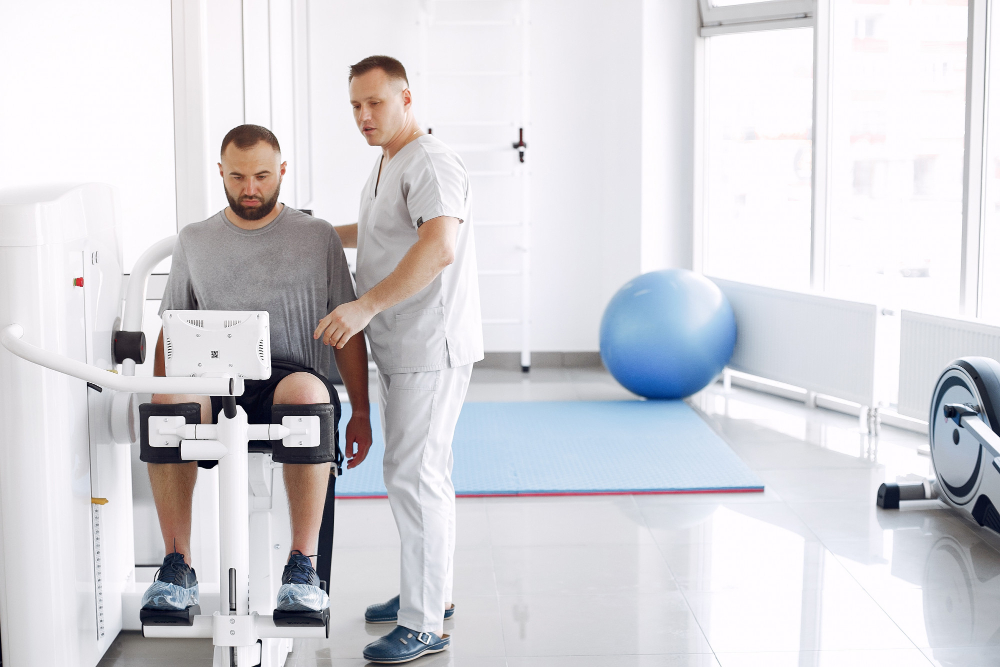What to Expect During Your Physical Therapy Timeline

Are you considering physiotherapy but unsure what to expect? Whether you're recovering from an injury, managing pain, or improving your mobility, understanding the timeline of physical therapy is key to staying motivated and achieving your goals. If you're in Winter Springs, FL, B Physical Therapy is here to guide you every step of the way.
This blog will walk you through the common phases of a physical therapy timeline, what to expect at each stage, and tips for maximizing your progress. By the end, you'll have a clear understanding of how physiotherapy can help you regain strength, mobility, and a higher quality of life.
Why Understanding the Physical Therapy Timeline Matters
Physical therapy is a personalized process. Every individual's recovery will look slightly different depending on their condition, age, and overall health. However, having an approximate timeline can:
- Set realistic expectations about your progress
- Help you focus on long-term goals
- Keep you motivated even during slower phases of improvement
If you're beginning physiotherapy in Winter Springs, FL, this guide will offer you general insight into what the process typically looks like.
The Timeline of Physical Therapy
While every treatment plan is unique, below are the general phases of physical therapy that most patients experience.
1. Initial Assessment (Week 1)
On your first visit, a licensed physical therapist will conduct an extensive evaluation to identify your specific needs and goals. Common components include:
- Reviewing your medical history
- Discussing your current pain levels, limitations, and concerns
- Assessments for range of motion, strength, and posture
- Establishing a personalized treatment plan
Example
If you’re recovering from a knee injury, your therapist will examine the knee’s mobility, assess the surrounding muscle strength, and inquire about how the injury affects your daily activities. From there, they'll create a plan tailored to improving stability and reducing pain.
What You Can Expect
- Clear communication about your goals
- An introduction to the exercises or therapies involved
- Scheduling your follow-up sessions
2. Acute Recovery Phase (Weeks 1–4)
During the initial weeks, the goal is to manage pain and reduce inflammation. Your therapist may focus on gentle mobility exercises and modalities like:
- Ice and heat therapy
- Electrical stimulation (if required)
- Low-impact strength exercises to prevent muscle atrophy
Common Goals in This Phase
- Controlling pain
- Reintroducing basic movement patterns
- Creating a foundation for future strength
At this stage, it’s important to follow your at-home exercise instructions carefully. Consistency is key to improving your comfort level and progressing to the next phase of therapy.
3. Strength Building Phase (Weeks 4–8)
Once pain and inflammation are under control, the focus shifts to rebuilding strength and range of motion. Your therapist will guide you through exercises designed to:
- Strengthen weak muscles
- Improve flexibility and joint stability
- Enhance coordination and body awareness
What to Expect
Therapy sessions will likely include a mix of targeted strength training, balance exercises, and education on proper movement mechanics. For example, if you're recovering from a rotator cuff injury, you may start doing resistance band exercises to strengthen your shoulder muscles.
This phase often brings the most noticeable progress, as strength and mobility steadily improve.
4. Advanced Recovery (Weeks 8–12)
The advanced recovery phase is where patients truly reclaim their confidence. By this point, you'll likely see significant improvement in your ability to perform daily activities without pain. Focus areas include:
- Functional exercises (matched to your lifestyle needs)
- Advanced balance training
- Cardiovascular conditioning, if applicable
For athletes, this might include sport-specific movements to ensure a safe return to their sport. For others, it may mean practicing exercises that mimic work tasks or daily activities.
Example
A runner recovering from Achilles tendinitis might practice treadmill intervals, while an office worker with back pain could focus on correcting their ergonomic setup and posture.
5. Final Phase (Weeks 12–16 and Beyond)
The last phase revolves around maintaining your progress and preventing re-injury. Depending on your condition, this phase may include:
- Continued strength training with reduced therapist supervision
- Transitioning to a home exercise program
- Education on preventing future complications
Many people find their "graduation" from physical therapy bittersweet. However, leaving therapy doesn’t mean the work is over. Creating a sustainable long-term exercise routine is key to maintaining your progress.
How to Overcome Challenges During Your Physical Therapy Journey
Like any recovery process, physical therapy may come with a few challenges. Here are some tips to stay motivated:
- Celebrate Small Wins
Whether it’s walking an extra block or bending your knee a few more degrees, acknowledge your achievements.
- Communicate With Your Therapist
If you're feeling frustrated or plateauing, talk to your therapist. They may tweak your treatment plan to address any setbacks.
- Build Healthy Daily Habits
Stay consistent with at-home exercises, practice proper ergonomics, and prioritize sleep and hydration.
Why Choose B Physical Therapy in Winter Springs, FL?
At B Physical Therapy, our mission is to deliver personalized care that helps you recover faster and live pain-free. Here's what sets us apart:
- Expert Curation of Treatments: Our therapists use evidence-based practices tailored to your needs.
- Community-Centered Care: We pride ourselves on making every patient feel welcome.
- Comprehensive Services: From hands-on treatments to advanced exercise programs, we support you at every stage of your recovery.
If you’re ready to begin physiotherapy in Winter Springs, FL, B Physical Therapy is here to support your goals.
Take Control of Your Recovery Journey
Understanding the timeline of physical therapy empowers you to approach each stage with confidence. With consistent effort and expert guidance, you'll regain strength, mobility, and independence.
If you're seeking personalized physiotherapy care in Winter Springs, FL, connect with the team at B Physical Therapy. Contact us today to schedule an appointment and start moving toward a healthier, pain-free you.